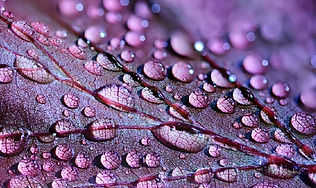
Photography A1:
Formal Elements: Pattern & Texture
Definition and Theory:
-
Texture refers to the tactile qualities of the physical surface of the object. In other words, how does the surface of the work feel when you touch it?
-
The challenge of seeing and capturing texture is mostly based on one element - light.
-
Texture can be accentuated by the side light of early sunny mornings or early evenings, or by overhead light when the sun is vertical and high in the sky.
-
Pattern is an underlying structure that organises surfaces or structures in a consistent, regular manner.
-
Pattern can be described as a repeating unit of shape or form, but it can also be thought of as the "skeleton" that organises the parts of a composition.
-
Patterns are simply repeated shapes, colours or objects, ordered in either regular or irregular formations.
-
As a photographer, using pattern is key to good composition and, when used effectively, can transform an otherwise bland image into something dramatic and eye catching.
My Image Bank:





The photographs I collected for my image bank present a wide range of different patterns and textures. I also researched types of textures and patterns within fashion due to my love for fashion in photography.








My Mind Map on Pattern and Texture:

Photographer: Edward Weston
Edward Weston was a 20th century American photographer. He has been called 'one of the most innovative and influential American photographers' and 'one of the masters of 20th century photography'. He is known for his intense focus of detail within different patterns and textures of objects. I appreciate the detail of his images which is why I will collect my own interpretations of his work by completely zooming in on an object to almost create an abstract photograph.




Within Edward Weston's style of photography there is a large amount of abstract features to almost create questions of what he has actually produced images of.
Photographer: Sebastiao Salgado
Sebastiao Salgado is a Brazilian social documentary photographer and photojournalist. He has travelled in over 120 countries for his photographic projects. Most of these have appeared in numerous press publications and books. Touring exhibitions of his work have been presented throughout the world. This photographer also focus on the detail within an image, along with also editing them to all be in black and white. I enjoy the different stories behind each photograph as well as the detail to again almost create an abstract photo.



Sebastiao Salgado has a very interesting aspect to his work. There are a number of elements creating intense detail and abstract features. All his work is black and white which allows the focus to point straight towards the pattern and texture within the photographs.
My Contact Sheets:
AO1: Develop ideas through sustained and focused investigations informed by contextual and other sources, demonstrating analytical and critical understanding.









Within my contact sheets I have circled my chosen best images in green to make them more visible. As well as circling my images needing improvements in red.
My Best Images (Non-Edits):








Images that need Improvements:




These photographs have all got quite a strong focus of a texture and/or pattern. I tried to focus some of my images similar to Edward Weston when creating an almost abstract photo within the detail.




AO3: Record ideas, observations and insights relevant to intentions, reflecting critically on work and progress.
I do not believe that these photographs are to my best standard as there is not a focus towards some sort of texture and pattern. Also, one of the photos (in the top right corner) is relatively dark which doesn't create a clear image.
My Editing Process:



Whilst editing my images I focused on changing the contrast and exposure to highlight the different textures and/or patterns within each image. Some were edited into black and white to link back to the photographers I researched. Whereas the others I left in colour I felt the colours presented the texture and/or pattern very well after editing.

AO2: Explore and select appropriate resources, media, materials, techniques and processes, reviewing and refining ideas as work develops.
My Edited Images:












AO4: Present a personal and meaningful response that realises intentions and, where appropriate, makes connections between visual and other elements.
After producing my final images in the theme of one of the formal elements, pattern and texture, I feel as if I have captured a variety of different effects within each pattern and texture. A majority of my photographs focused on the different types of fashion, where I used a few items of my own clothing. These were inspired by a few of the images I collected previously in my image bank. Whereas, a number of them were inspired by the photographer Edward Weston I researched beforehand, which is shown through the photos I edited and produced in black and white. However, I still edited and produced other images in the bright colours as I feel it highlighted the patterns and textures within the objects/items.